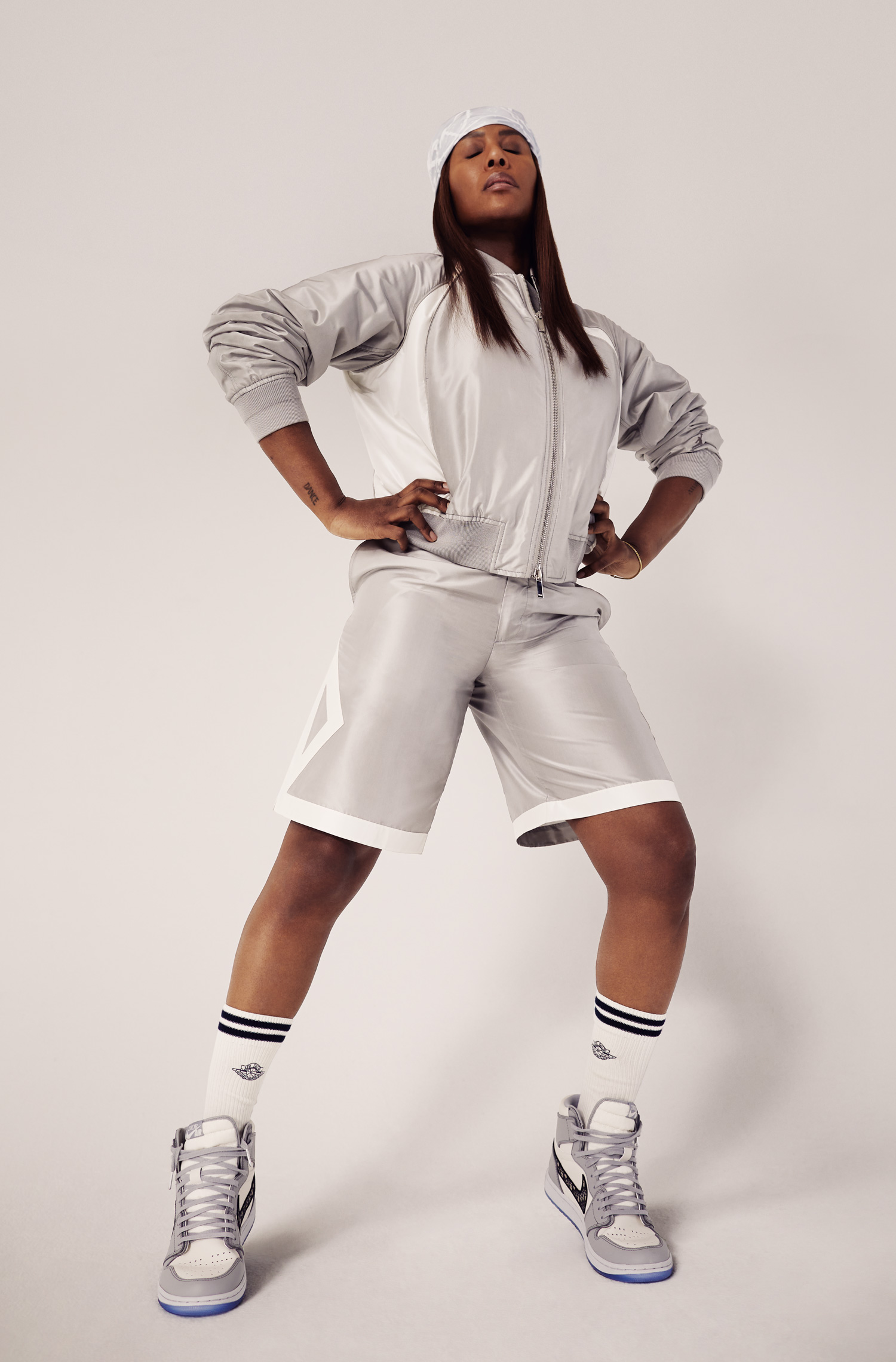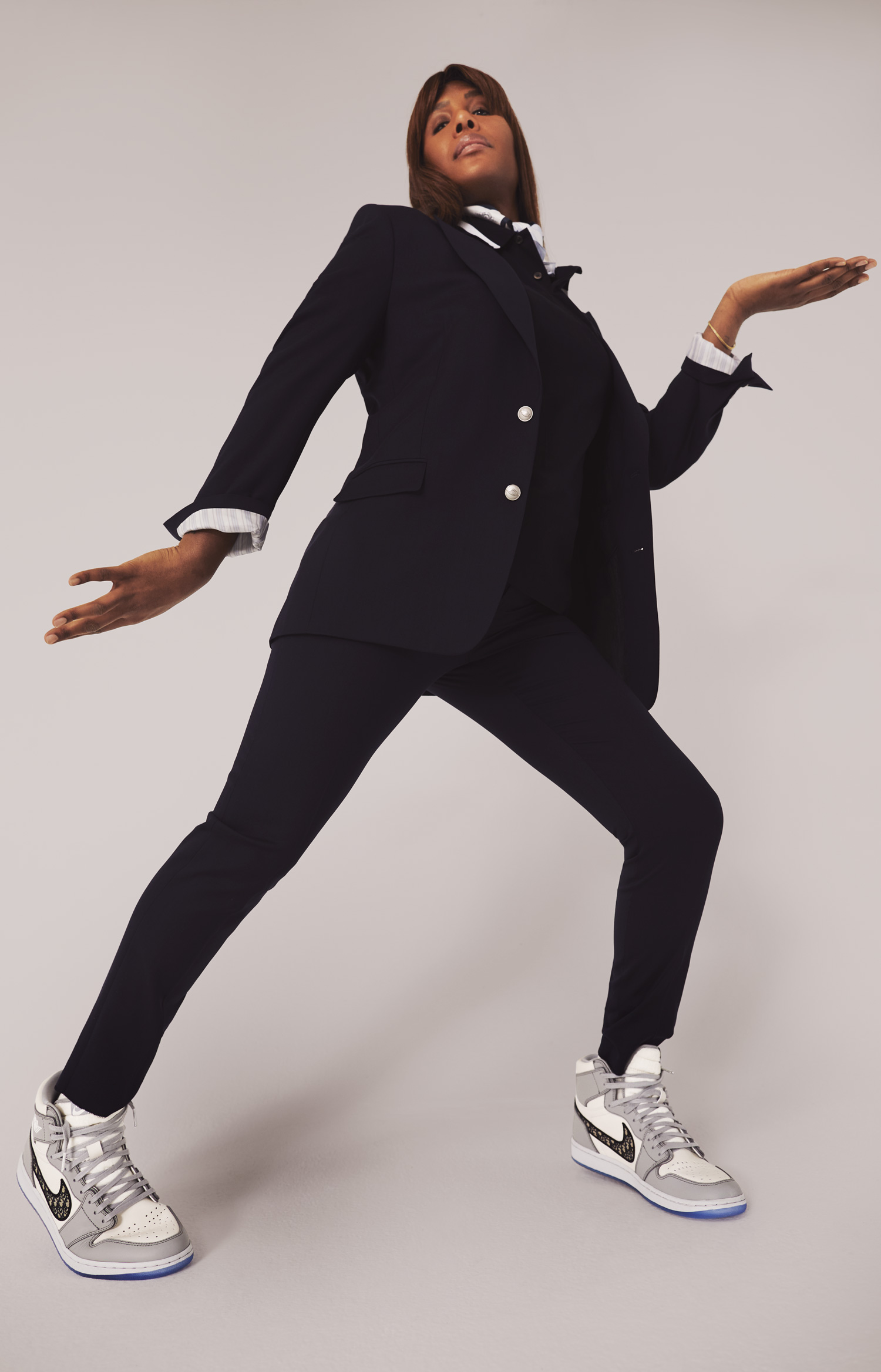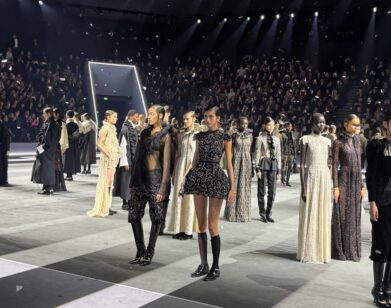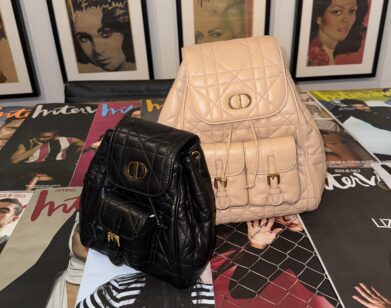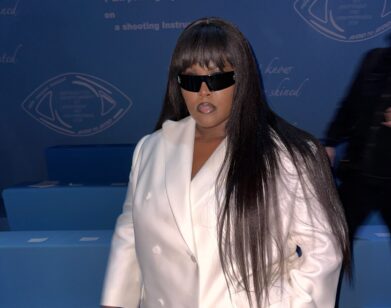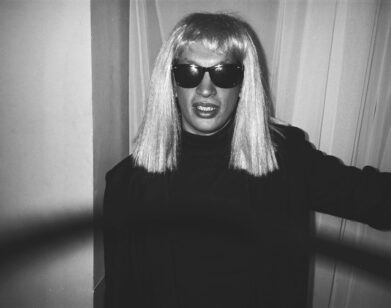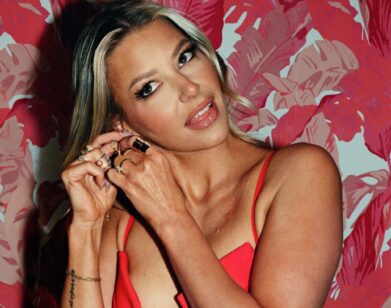Kim Jones and Honey Dijon on the Place Where Fashion and Nightlife Meet
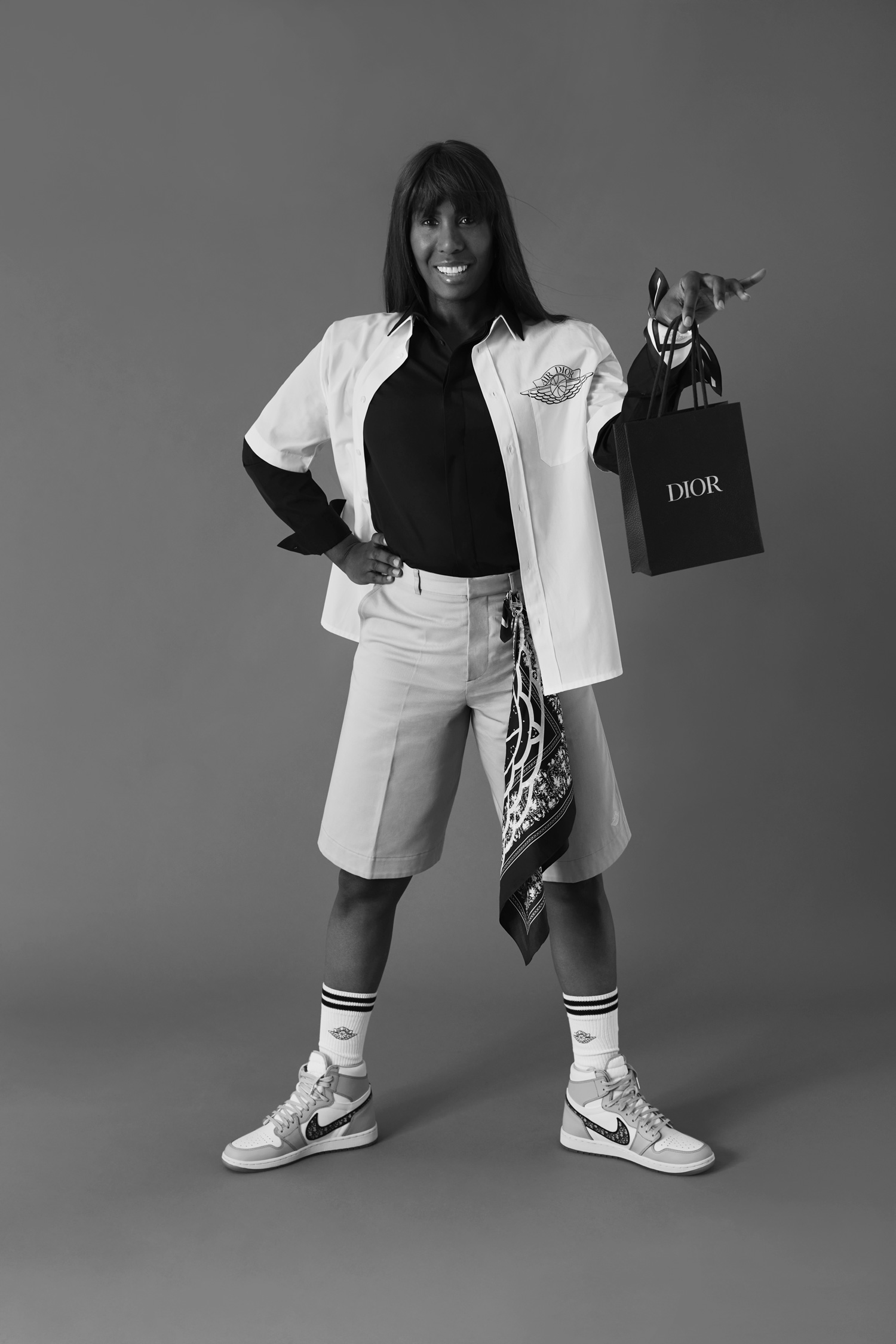
All Clothing and Accessories by Air Dior.
Kim Jones, the fashion designer and men’s artistic director at Dior, pinballed through Africa and the Amazon as a child, eventually settling down in London, where he now lives. Honey Dijon, the DJ, music producer, and style icon, came up in Chicago’s storied house-music scene, and now splits her time between New York and Berlin. Together, they’re behind some of the most unforgettable soundtracks that accompany his always-daring runway shows. Which is why we could think of no better person to interview him about his new collection for Nike’s Air Jordan—or to serve up the looks.
———
KIM JONES: Let’s start with how we met.
HONEY DIJON: I knew you before I met you. I was in London with [the DJ] Derrick Carter, and we went into a store just to have a look, and there was your graduate collection. I was like, “Who is this person?” I made it my mission after that to find you. And, lo and behold, we eventually met and ended up rolling around on a floor in the Meatpacking District.
JONES: We drank too much vodka. If I remember correctly, we also did a bit of vogueing.
DIJON: It was amazing. I sort of hunted you, actually. I recall speaking to everyone I knew in London about how I could meet you because that collection was so incredible. It was presented like an installation, with records and slides on the walls. How did you get all of that memorabilia?
JONES: It was on eBay all the time. This was when the internet was really slow—you’d have to dial up, so it was kind of frustrating. But you’d become friends with the people you’d buy from and then they’d go, “Oh, my friend’s got some other stuff.” I just started collecting things that way.
DIJON: Something that I love so much about you is your attention to detail. When you start collecting, you have to have the entire archive. That’s true for your other collections, from Leigh Bowery to Vivienne Westwood to Keith Haring. Your clothing archive is insane.
JONES: I’m a completist. But it’s not like it just happened overnight. The same logic applies when we’re working together on music for shows. It’s about looking at all the details and getting everything really perfect, as much as we possibly can.
DIJON: You are so knowledgeable about Chicago house culture, where I came from, but also other music. You always infuse your work with the things you love. From Paris Is Burning to John Waters to Chicago house music to New York culture. When we became friends, you were doing your own collection, Kim Jones, and then you went to Dunhill and then you went to Louis Vuitton, and now you’re at Dior. How do you get away with making everything feel so personal?
JONES: The people who know just know. Then for other people, it’s more about the quality and the craftsmanship. I just do what I do. I’m not ever taking the piss or disrespecting people. It’s more like I just bring in these subtle things because I know that people really love that stuff—they get an extra kick out of it.
DIJON: You were one of the first designers to do luxury streetwear. Can you tell me a bit about that process? Do you even consider luxury streetwear a thing anymore?
JONES: What people have done with streetwear really bugs me, because what we’re actually looking at is sportswear—all those designs are done for some sort of sport. So really, it’s sportswear versus fashion. When I was working with Shawn Stussy, he said, “I hate the term ‘streetwear.’ It means nothing.” You know that high-low thing people talk about? High-low is merely about price. It’s not that low is bad and high is good. It’s just that the two things fit together in the modern menswear arena. Playing with those different things really is what it’s about now.
DIJON: You were just in Chicago. What did you think of it? I left over 20 years ago, but it’s always in my heart. It’s a blue-collar town, so people are really down-to-earth. They appreciate authenticity and realness.
JONES: I was quite impressed. I went for the first time with Kanye [West], Virgil [Abloh], and Rihanna for Kanye’s “Homecoming” show, and we didn’t get to see anything. This time, I went around to all the stores and saw people in the street. All the kids were turned out in their own style, which was really cool to see. Obviously, there’s the music side as well, but I didn’t get a chance to see enough of that. There’s so much there. I need to go back with you.
DIJON: I was a second-generation house-head. I sort of missed the Power Plant and the Warehouse, but I was able to sneak into the Music Box when I was about 12. My mother hates it when I tell that story. She thinks she was a bad parent. Chicago, at that time, was lawless. This was music created by queer people of color and inner-city black kids, so it wasn’t policed. You could get fake IDs, you could go to these clubs, and you could listen to this music. Being born and raised in Chicago, working with you, an artist who designs for a heritage French label, and then doing a photo shoot in clothes that were inspired by Chicago, the Bulls, and Michael Jordan—it was full circle for me.
JONES: I think it’s kind of amazing, because you know that those shoes would have been on the floor at the Music Box or the Warehouse.
DIJON: Exactly. Did you have Chicago-style pizza? Every time I go there to visit my family, I eat pizza for, like, five days. All I eat is pizza.
JONES: I don’t know how you could eat it all the time, though. It was really a lot to deal with.
DIJON: Well, then you go home and starve yourself. That’s how that works. Anyway, I can’t believe you’ve been at Dior now for two years. You’ve already done so much.
JONES: You’ve seen me move from Vuitton, which is a very big building. This is a smaller, more flexible company that allows me to work faster. For me, the problem is never getting ideas. We’re super organized. I already know what we’re doing for summer, because I’ve been listening to a lot of music while I’ve been traveling. I want each show to be an event. I want it to be different every time. I want it to be something that people will remember. There are a lot of shows out there, and you have to make a difference.
DIJON: You have to have a unique voice. Even in my world, there are so many DJs and so many clubs and festivals that you really have to have a specific point of view. That’s why I’m in London creating parties the way a lot of people do drops now. I could have one residency at one club and do the same thing every week, but instead I’m creating different parties with different environments and different moods—I think it’s important to give people that. You have to make things special and unique for people. It also means we both travel an insane amount. How do you handle that?
JONES: I grew up in lots of different countries. I really want to see the whole world before I die. I love nature and I love wildlife. I’m really invested in conservation. It’s not like I draw a direct line from these things to my designs, but when I have a bit of a creative block, or when I’ve finished a show, I just want to get to the middle of nowhere and be with a group of friends and not have anything else apart from the beauty of nature. Then I come back, and I’m ready to play.
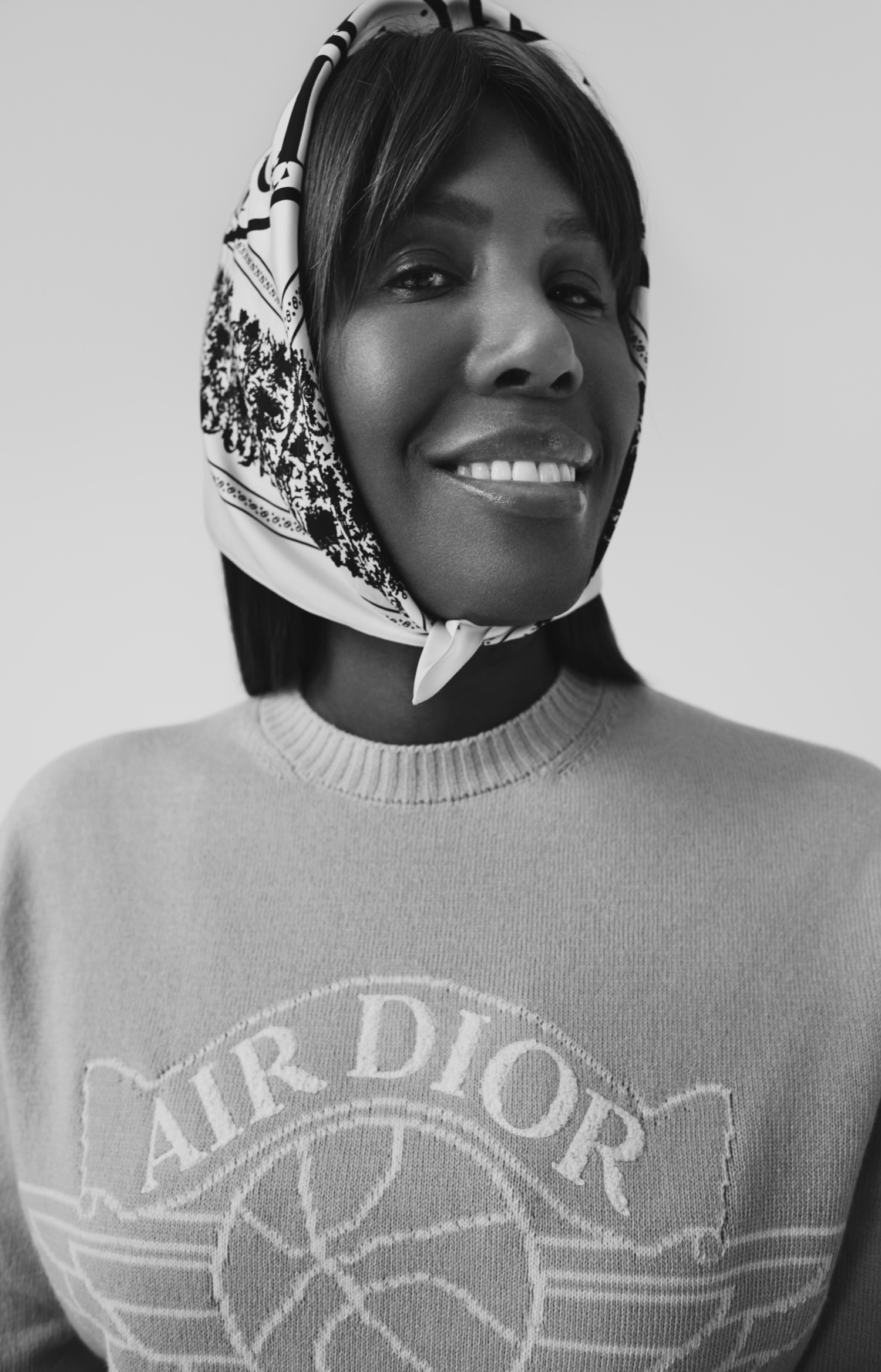
DIJON: Let’s talk about the new home that you just moved into in London. It’s completely different than anything I’ve ever seen.
JONES: It’s perfect. I gave up my place in Paris, and I wanted all my stuff in one place so I could go through everything, assess, and edit. It’s really calm and peaceful. It’s very private, and no one knows I live there. It’s just concrete, metal, and glass.
DIJON: Very Bond.
JONES: Bond, but in the Batcave. Speaking of basements, nightlife was probably where I met all the formative people that I now work with, but I don’t really go out anymore. Only on very special occasions. But all of my formative relationships have been through nightlife. I think that was one really good thing about London: People met in organic ways. Stylists, designers, photographers—that’s how lots of things formed. It’s like that in New York as well. Interview is a prime example of Andy Warhol going out, meeting people at night, and taking photos of people that do things. It’s exciting.
DIJON: For me, there’s never been a difference between fashion, art, music, and nightlife. Growing up in Chicago at the beginning of house music culture, in order for other people to know that you were into this music, there was a dress code. A lot of that had to do with recreating images that you saw in Vogue. That’s how I discovered Jean-Paul Gaultier, Claude Montana, and Versace. All these inner-city black kids mopping—mopping is stealing—these clothes. Not all inner-city kids stole, a lot of them worked to pay for it, but my introduction to fashion was just seeing kids on the street. It mirrors today with Off-White and Dior and Alyx. These kids are wearing codes to talk to each other. That doesn’t change over time. In New York, you couldn’t get into a club unless you had a personality or a look. I met most of the people in fashion just DJing in clubs or when I got asked to do after-parties. Nightlife, for me, has always been about meeting, making, creating, and participating, and that informs what I do today. I don’t believe in aspirational fashion. I believe in engaging with fashion and using it to express who you are and to speak to your tribe. It’s not about money, it’s about creativity. Nightlife is always going to be my inspiration for how I do anything and everything.
———
Hair: Wataru Suzuki
Makeup: Feride Usly using Dior Backstage Face & Body Foundation
Production: Gaia Geneston at Trouble Mgmt.
Digital Technician: Julian Essig
Photography Assistant: Kwame Boama

